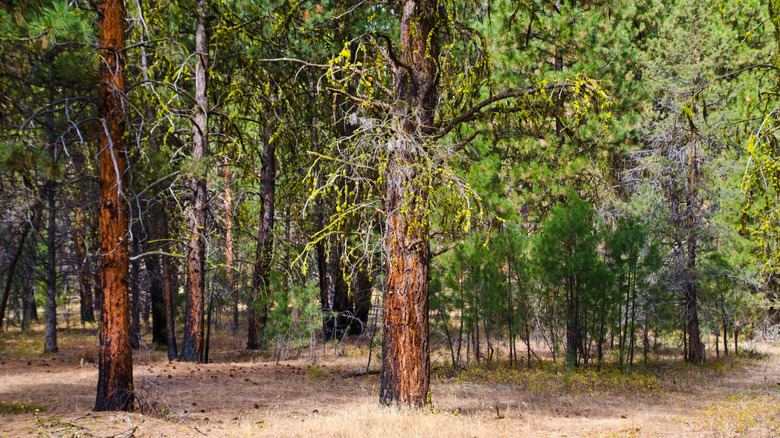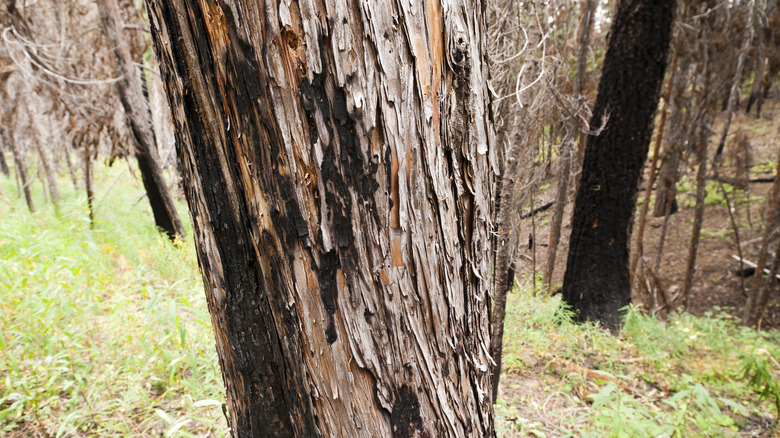Hidden In An Underrated National Forest Is A Stunning Botanical Preserve With Some Of Oregon's Rarest Trees
Hidden away in a rugged and remote expanse of Eastern Oregon is one of the Beaver State's biggest surprises: a small grove of Alaska yellow cedars — the only one that exists east of the Cascade Mountains in the United States. The Malheur National Forest is an underrated wilderness area in the Blue Mountains that has a forest-top camping escape with unmatched views, and its lush, green 26-acre Cedar Grove Botanical Area is a stunning preserve where these rare yellow cedars grow. As their name indicates, Alaska yellow cedars are typically found in the wetter, colder regions of Alaska, as well as British Columbia and the western parts of the Cascades in Washington and Oregon. So, how did they end up here?
During the Pleistocene era, when this area was cooler and more humid, these Alaska yellow cedars grew in droves. Experts believe there were many of them in the area, but after the Ice Age ended and the climate changed, ponderosa pines and more desert-loving flora like junipers started growing instead. However, in this patch of land, a particular mix of weather and moisture conditions allowed the trees to keep on trucking, and they continued to grow in this grove alongside ponderosas and Douglas firs.
Similar to how you should always check for closures before heading to any trailhead in Southern California, this area of Oregon is susceptible to fires. At the time of this writing, the site is closed due to fires, so it's important to check the official website for updates on if its accessible.
How to reach the Cedar Grove Botanical Area in the Malheur National Forest
The Cedar Grove Botanical Area is about a three-hour drive from the breathtaking mountain beauty of Bend and just under an hour from Mount Vernon. You can only access the grove by hiking a mile into it on the Cedar Grove National Recreation Trail. This hike includes ascents and descents, and you'll pass through a lovely wildflower meadow filled with bright larkspur and paintbrush flowers, depending on the time of year. When you reach the grove on the northeast slope of Aldrich Mountain, you might be surprised by the low number of Alaska yellow cedars.
While some of the Alaska yellow cedars have been standing for over 300 years, about 90% of them were burned in 2006 during the Shake Table Complex Fire. In an attempt to stop that fire from spreading, firefighters lit a backburn in the cedar grove, a low and controlled fire that consumes fuel in areas near a wildfire to slow it down. But in this case, the Forest Service's fire got out of hand and burned many of these rare cedars, whose thin bark makes them vulnerable to extreme heat and wildfires.
These days, there are only about 2 acres of Alaska yellow cedars still standing. But it's not all depressing news, as botanists have found cedar seedlings throughout the grove that give hope for future growth.

